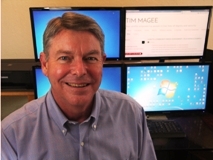HOW I GOT STARTED WORKING IN CLIMATE CHANGE
I caught the climate bug.
The Environment
In college, I became very interested in the environment. It was the early days of the environmental movement when people were beginning to point out environmental challenges—like population growth and DDT.
Over time, I traveled to 30 developing nations and saw firsthand the beginnings of the deterioration of the environment.
I wanted to do something to protect the environment, and in the 1980s, I became a pioneer in passive solar heating. This led to a successful 25-year business career in passive solar heating.
I decided to begin giving back by using my business skills to coach nonprofits and NGOs on how to clearly define community challenges and solve them using evidence-based solutions: sustainable solutions with proven track records.
Climate Change
My long-time interest in the environment morphed in the 90s into an interest in—no, an obsession—with climate change. These were the early days of people’s concerns about global warming—and at first, I didn’t really know what I could do to help.
Over several years, my climate concerns grew. 15 years ago, my desire to have a positive impact led me to found CSDi. Through our training programs, I observed the increasing challenges brought on by global warming that students from 150 countries were experiencing.
I shifted my personal focus to what has become my favorite thing to do: develop Climate Action Plans with nonprofits, governments, rural communities, and engaged community members.
I have always enjoyed taking on big challenges and finding simple, effective solutions that a range of people can grasp and move forward with.
– I always put community members at the center of all that I do.
– I excel at launching big initiatives with given constraints.
– My ideas are good, but I seek evidence in data for my decisions.
I learned through CSDi that in less than 10 years I could work with over 500 organizations in 154 countries to develop climate action plans that positively impacted over half a million people.
